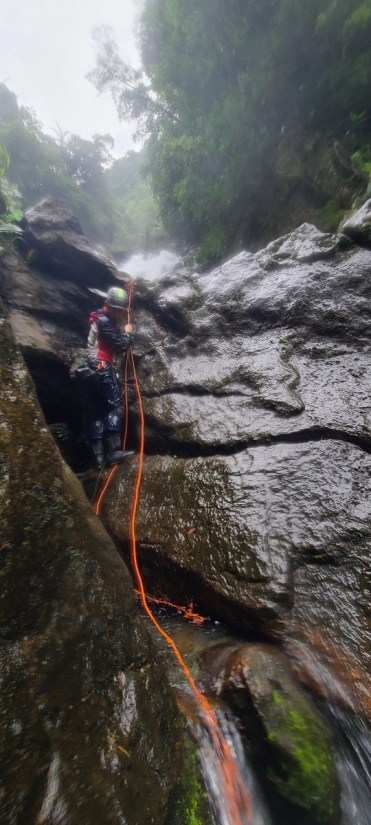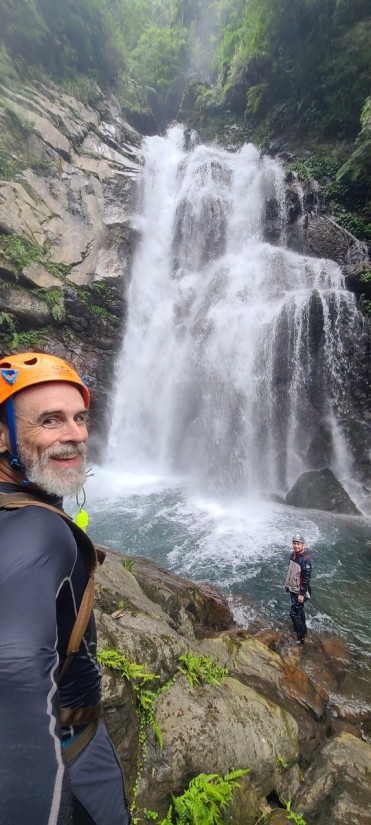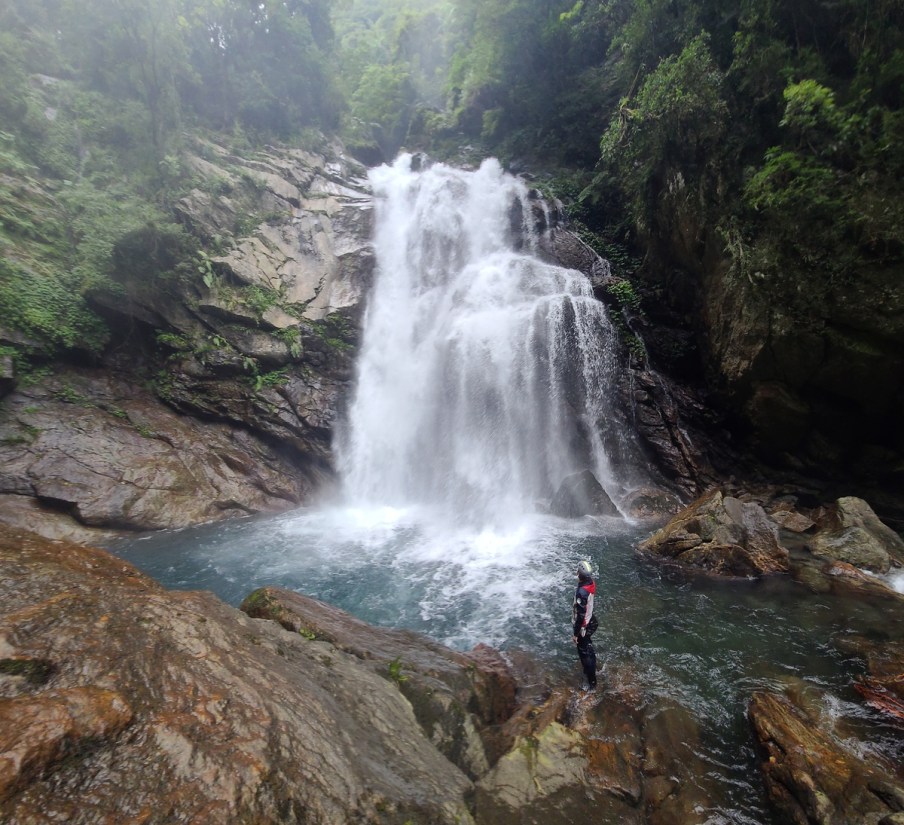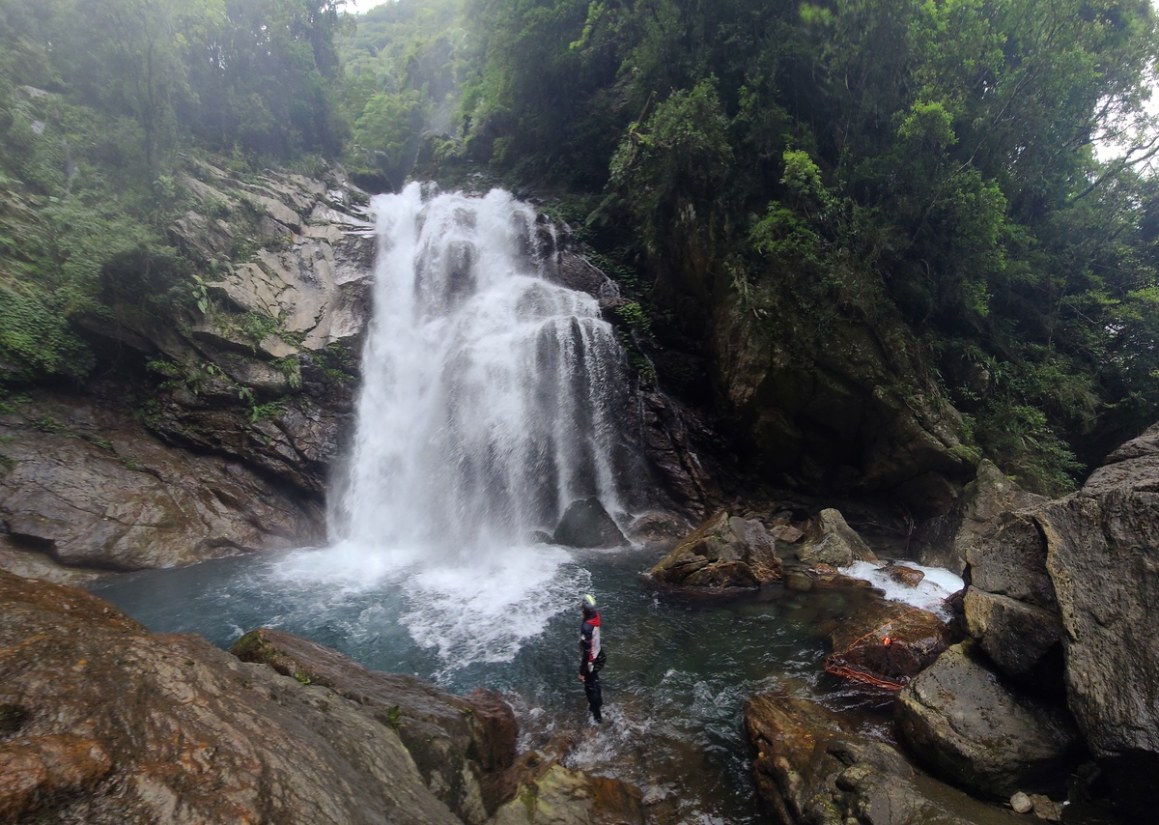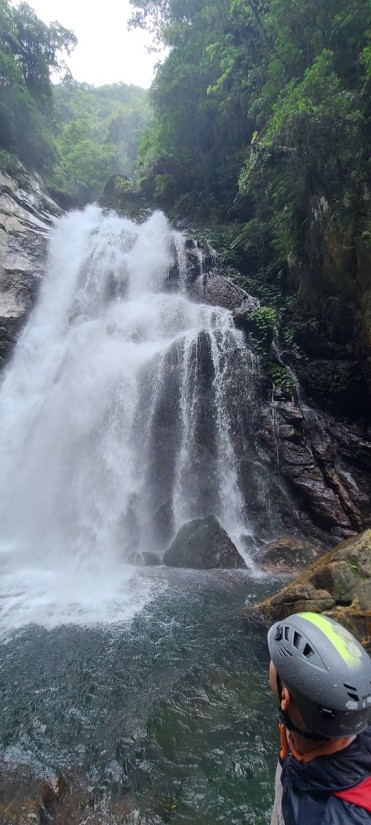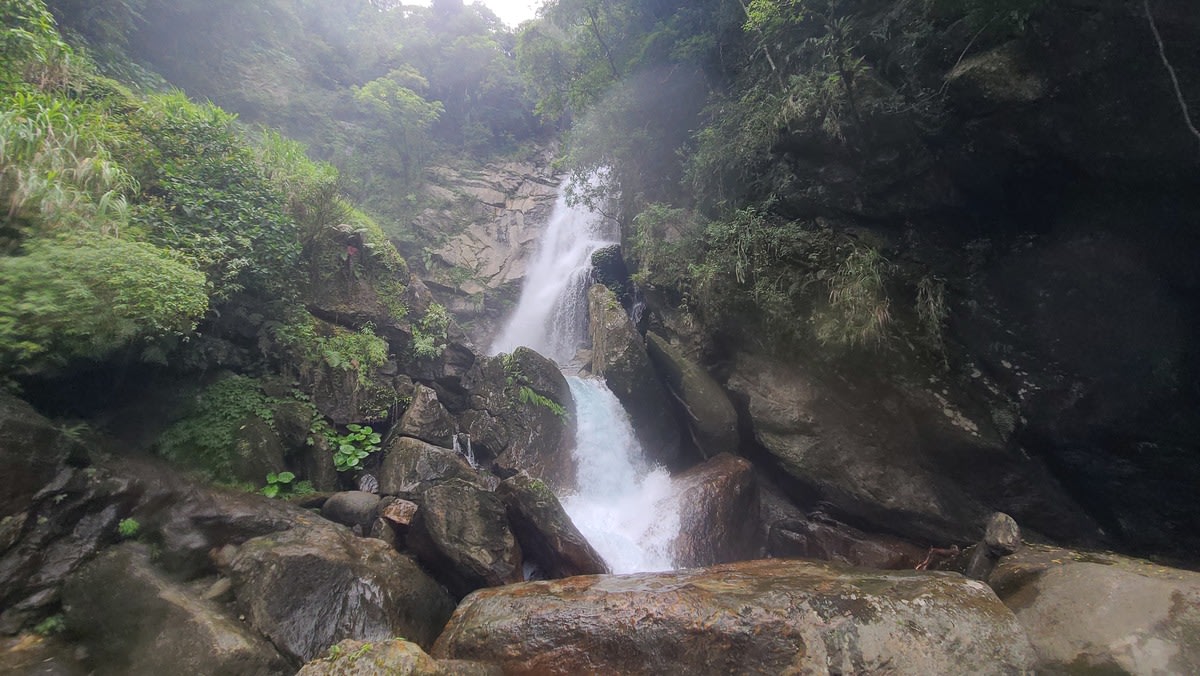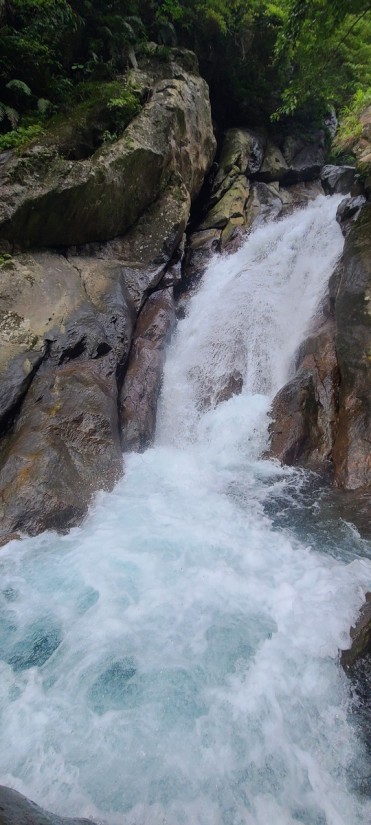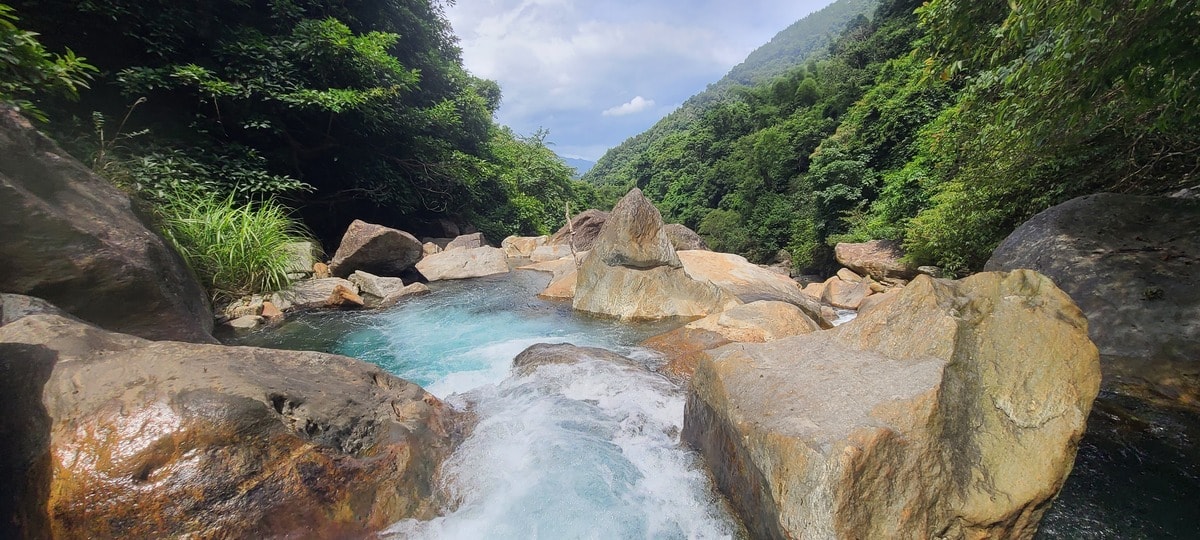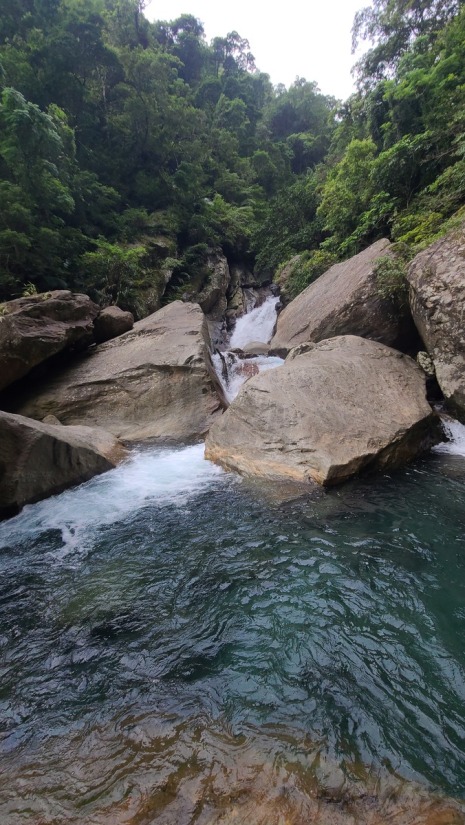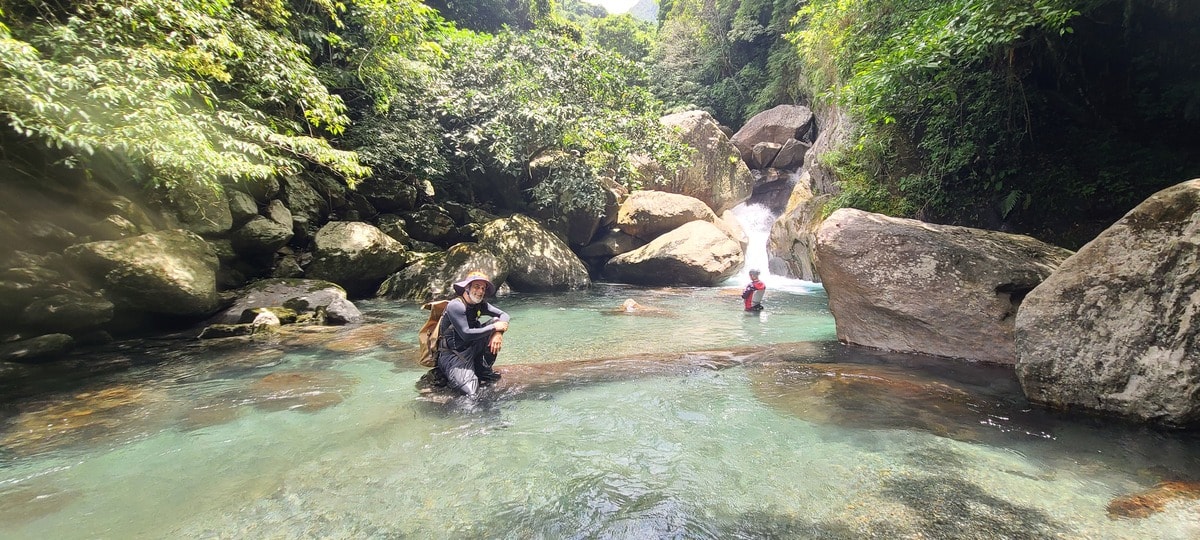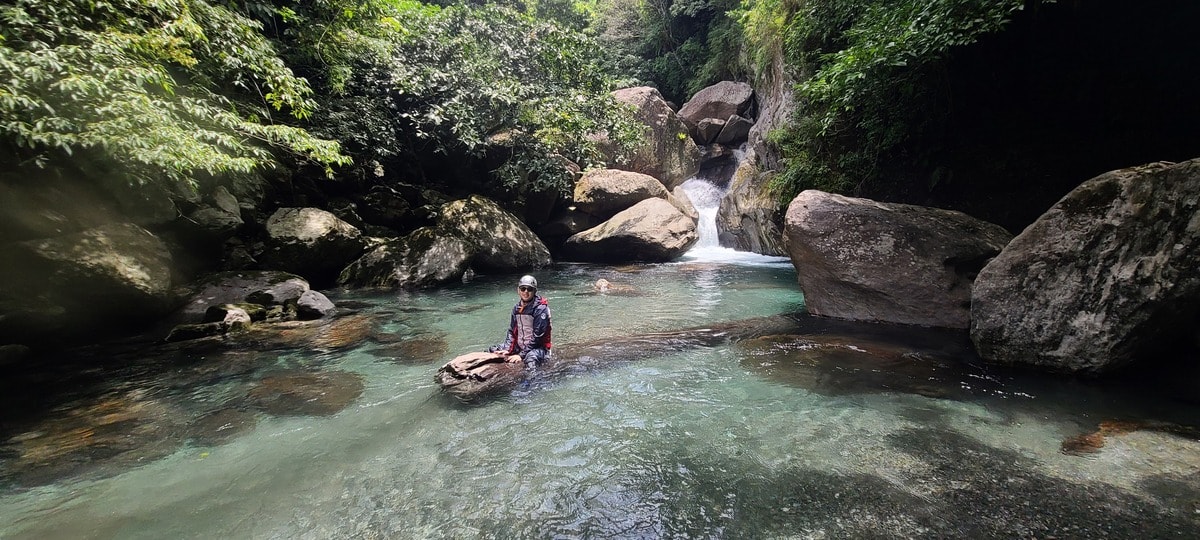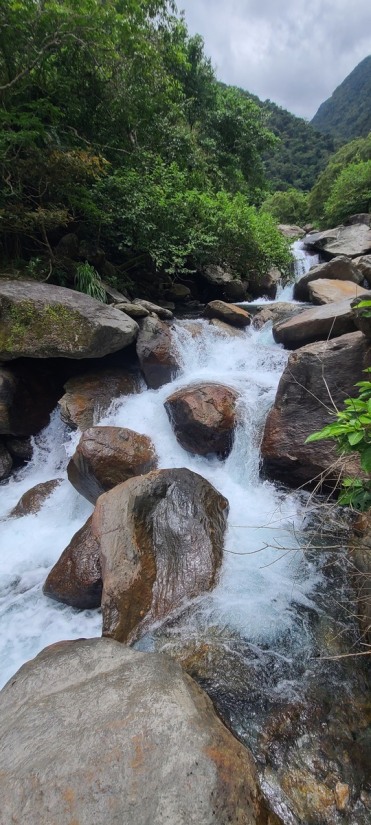 Jay
Jay
Starting Location
Edit 24.41518,121.73927Ending Location
Edit 24.40679,121.73376Time needed
EditAround 8 hours in total.
Safety
EditI went there a week after typhoon left, so the waterflow was 2.5 times than usual. I believe the trace is much easier when the waterflow is normal. I saw numerous waterholes. At highwater flow the difficulty is definitely 5/5.
Equipment
EditRopes and equipment for anchors and rappeling.
General information
EditI visited the location a week after the typhoon had passed, resulting in the waterflow being 2.5 times its usual rate. I believe tracing the path is much easier under normal waterflow conditions. On that day, I encountered numerous waterholes. We drove down to the end and began walking along a trail towards the GPS spot. The creek serves as a water source for the village below, with visible pipes. The first waterfall was particularly enchanting, featuring a beautifully serene pool in front of it (I'm uncertain if it was at coordinates 24.41096, 121.73626). Up until this point, the creek was characterized by large rocks and a swift current, without anything noteworthy to document. As we approached the final waterfall, the boulders grew larger, and the terrain became steeper. 300 meters away from the destination, we walked around along the mountainside on the right side of the creek (facing downstream). We descended into the valley on a rope I set up to a tree, and left it there for our return. Close to where we descended with the rope, we encountered the most challenging part of the river tracing. A precarious rope was hanging in a strong current. Due to the high risk and time constraints (we had set off late), I initially considered retreating. However, David (The Map Room) managed to climb the rope, which had been there for who knows how long. I was reluctant to use the same rope, so I passed my rope to him to set up a rope for me to cross the boulder. The potential danger was immense – being swept away by the powerful current or the rope breaking could lead not only to a dangerous fall but also to potential death from the waterhole (as everything seemed like a waterhole that day). I asked about his assessment of the climb, and he estimated an 80% chance of success. Well, not my style, but he's much stronger than me. On the return journey, we rappelled down instead of using the rope in the water. Around 100 meters beyond the previous obstacle, there was a 15-meter slanted waterfall. We circumvented it on the left side. Although there were two small ropes visible (which I didn't use), the area in front of the waterfall presented challenges. If you managed to reach this point, you should be relatively fine here. The rocks were extremely slippery here. We witnessed the tremendous rush of water cascading from the height of 45 meters into a pool and roaring through the gorge. Adjacent to the pool, the water was squeezed between two large rocks, creating a secondary 3-meter waterfall as it dropped. The sight was truly amazing, leaving us both astounded and thrilled. However, the journey wasn't over. A path existed on the right side of a large rock (facing downstream). David managed to climb over, but he was uncertain about the stability of the worn rope hanging there. I secured a rope and slings around the rope anchor for safety. Upon climbing up to the anchor rock, the powerful current was right beside and below us, flowing between the two massive rocks. With caution, we descended and walked through the water while holding onto the rope. The water level was so high that it reached my chest. It weirdly reminded me the time in the gorges of Jianianduan when I fought against currents. Finally, we reached the front of the waterfall. It has a resemblance to Yuemeikeng but with a waterflow seven times stronger. During our return, I held a rope attached to David and descended first, carefully seeking footholds and avoiding potential waterholes. Then, I guided him down. At high water flow, the difficulty is undoubtedly at a 5/5 level. I can't speculate on how this would be under normal waterflow conditions--definitely much easier!



